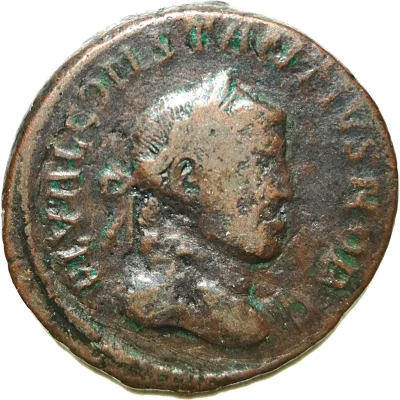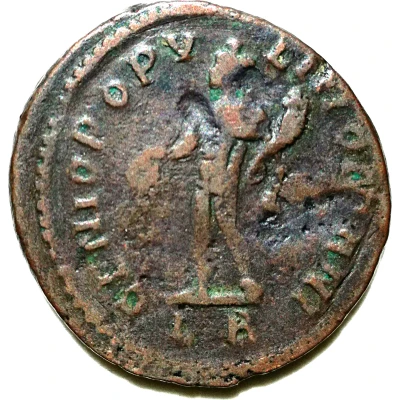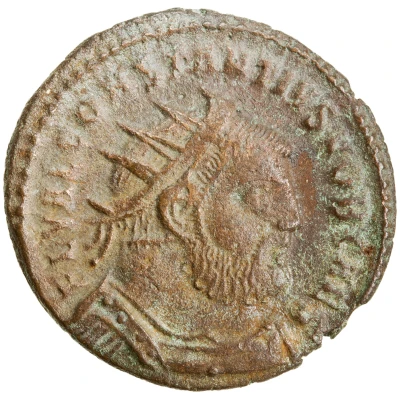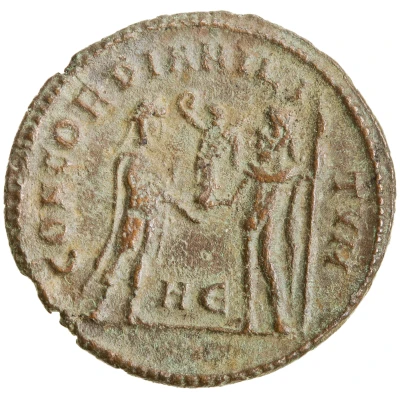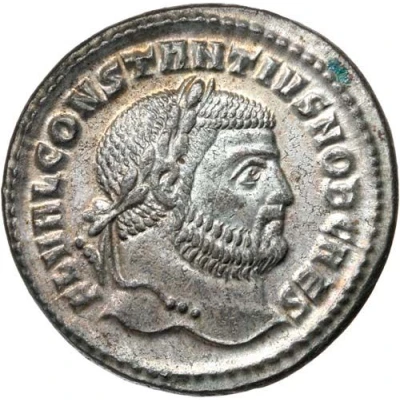
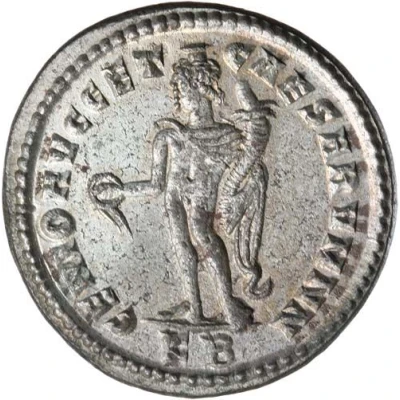

© Michael62
Follis - Constantius I GENIO AVGG ET CAESARVM NN; Cyzicus
| Bronze | 8.9 g | 26.7 mm |
| Issuer | Rome › Roman Empire (27 BC - 395 AD) |
|---|---|
| Emperor | Diocletian (Gaius Aurelius Valerius Diocletianus) (284-305) |
| Type | Standard circulation coin |
| Years | 295-296 |
| Value | Nummus / Follis (¼) |
| Currency | Argenteus, Reform of Diocletian (AD 293/301 – 310/324) |
| Composition | Bronze |
| Weight | 8.9 g |
| Diameter | 26.7 mm |
| Thickness | 2.4 mm |
| Shape | Round (irregular) |
| Technique | Hammered |
| Orientation | Variable alignment ↺ |
| Demonetized | Yes |
| Updated | 2024-10-05 |
| Numista | N#319329 |
|---|---|
| Rarity index | 97% |
Reverse
Genius standing left, wearing modius on head, nude but chlamys draped over left shoulder, holding cornucopia in left hand and with right hand a patera from which is flowing liquor; mint and officina letters in exergue.
Script: Latin
Lettering: GENIO AVGG ET CAESARVM NN
Unabridged legend: Genio Duorum Augustorum et Caesarum Nostrorum
Translation: To the Genius of our two augusts and caesars.
Interesting fact
One interesting fact about this coin is that it features an image of Constantius I, who was a Roman emperor from 293 to 306 AD, on the obverse (front side), while the reverse (back side) bears the inscription "GENIO AVGG ET CAESARVM NN" which means "To the genius of the emperors and Caesars". This coin was minted during a time when the Roman Empire was transitioning from a system of multiple emperors (known as the Tetrarchy) to a single emperor rule, and Constantius I was one of the four rulers who were part of this system.
